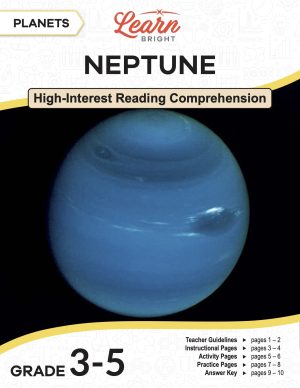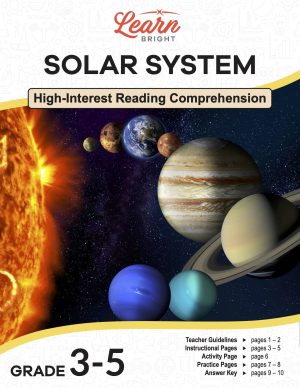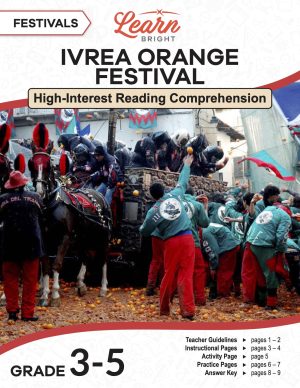Description
What our Properties of Figures lesson plan includes
Lesson Objectives and Overview: Properties of Figures introduces students to the variety of ways in which shapes and figures can be classified. At the end of the lesson, students will be able to understand attributes belonging to a category of two-dimensional figures also belong to all subcategories of that category. Students will be able to classify two-dimensional figures in a hierarchy based on properties. This lesson is for students in 5th grade and 6th grade.
Classroom Procedure
Every lesson plan provides you with a classroom procedure page that outlines a step-by-step guide to follow. You do not have to follow the guide exactly. The guide helps you organize the lesson and details when to hand out worksheets. It also lists information in the blue box that you might find useful. You will find the lesson objectives, state standards, and number of class sessions the lesson should take to complete in this area. In addition, it describes the supplies you will need as well as what and how you need to prepare beforehand.
Options for Lesson
Included with this lesson is an “Options for Lesson” section that lists a number of suggestions for activities to add to the lesson or substitutions for the ones already in the lesson. One optional addition to this lesson is to have your students create their own flow charts for display in the classroom. You could also have your students write their own Mystery Figure problems for the lesson activity. For another activity, you could have your students cut and glue pictures of triangles and quadrilaterals into a math journal. Finally, for a hands-on activity, you could have your students make shapes out of playdough.
Teacher Notes
The teacher notes page includes lines that you can use to add your own notes as you’re preparing for this lesson.
PROPERTIES OF FIGURES LESSON PLAN CONTENT PAGES
Properties of Triangles
The Properties of Figures lesson plan includes two content pages. We classify triangles by their angle measures or by the number of congruent sides they have.
When classifying by angles, we sort triangles into three types: acute triangles, obtuse triangles, and right triangles. Acute triangles are triangles with three acute angles (angles less than 90°). Obtuse triangles are triangles with one obtuse angle (an angle greater than 90°). Right triangles are triangles with one right angle (an angle that is exactly 90°).
When classifying by sides, we also sort triangles into three types: equilateral triangles, isosceles triangles, and scalene triangles. Equilateral triangles have three congruent sides (sides with the exact same length). Isosceles triangles have at least two congruent sides. Scalene triangles have no congruent sides.
Properties of Quadrilaterals
Quadrilaterals are polygons with four sides. There are five main types of quadrilaterals: parallelograms, rectangles, rhombuses, squares, and trapezoids.
Parallelograms are quadrilaterals whose opposite sides are parallel and congruent. Rectangles are parallelograms with four right angles. Rhombuses are parallelograms with four congruent sides. Squares are rectangles with four congruent sides or a rhombus with four right angles. Trapezoids are quadrilaterals with exactly one pair of parallel sides.
The lesson includes a helpful chart with each of the possible characteristics of a quadrilateral (only one pair of parallel sides, two pairs of parallel sides, all sides congruent, opposites sides are congruent, and all angles are right angles). Students can reference this chart to remind themselves which quadrilaterals have which characteristics.
PROPERTIES OF FIGURES LESSON PLAN WORKSHEETS
The Properties of Figures lesson plan includes four worksheets: an activity worksheet, a practice worksheet, a homework assignment, and a quiz. You can refer to the guide on the classroom procedure page to determine when to hand out each worksheet.
LET’S INVESTIGATE! ACTIVITY WORKSHEET
The activity worksheet asks students to read the mystery clues printed on the second page of the worksheet to solve eight mystery problems. For each, they will write down their answer and draw a picture of the figure.
FILL IN THE BLANKS PRACTICE WORKSHEET
For the practice worksheet, students will first fill in the blanks in two statements about figures. They will then decide whether six statements are always, sometimes, or never true. Finally, they will identify three quadrilaterals.
PROPERTIES OF FIGURES HOMEWORK ASSIGNMENT
The homework assignment asks students to decide whether ten statements are true or false. If they decide a statement is false, they will then draw a figure to support their conclusion. They will also answer the question “What makes a square different from a rhombus?”.
QUIZ
This lesson also includes a quiz that you can use to test students’ understanding of the lesson material. For the quiz, students will identify six figures. They will then answer some questions about the properties of different figures.
Worksheet Answer Keys
This lesson plan includes answer keys for the activity worksheet, the practice worksheet, the homework assignment, and the quiz. If you choose to administer the lesson pages to your students via PDF, you will need to save a new file that omits these pages. Otherwise, you can simply print out the applicable pages and keep these as reference for yourself when grading assignments.









